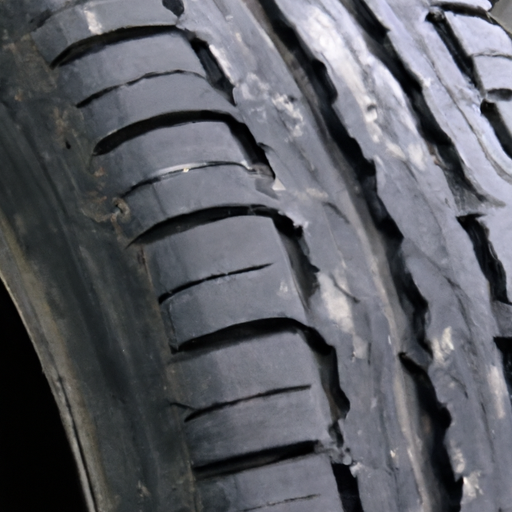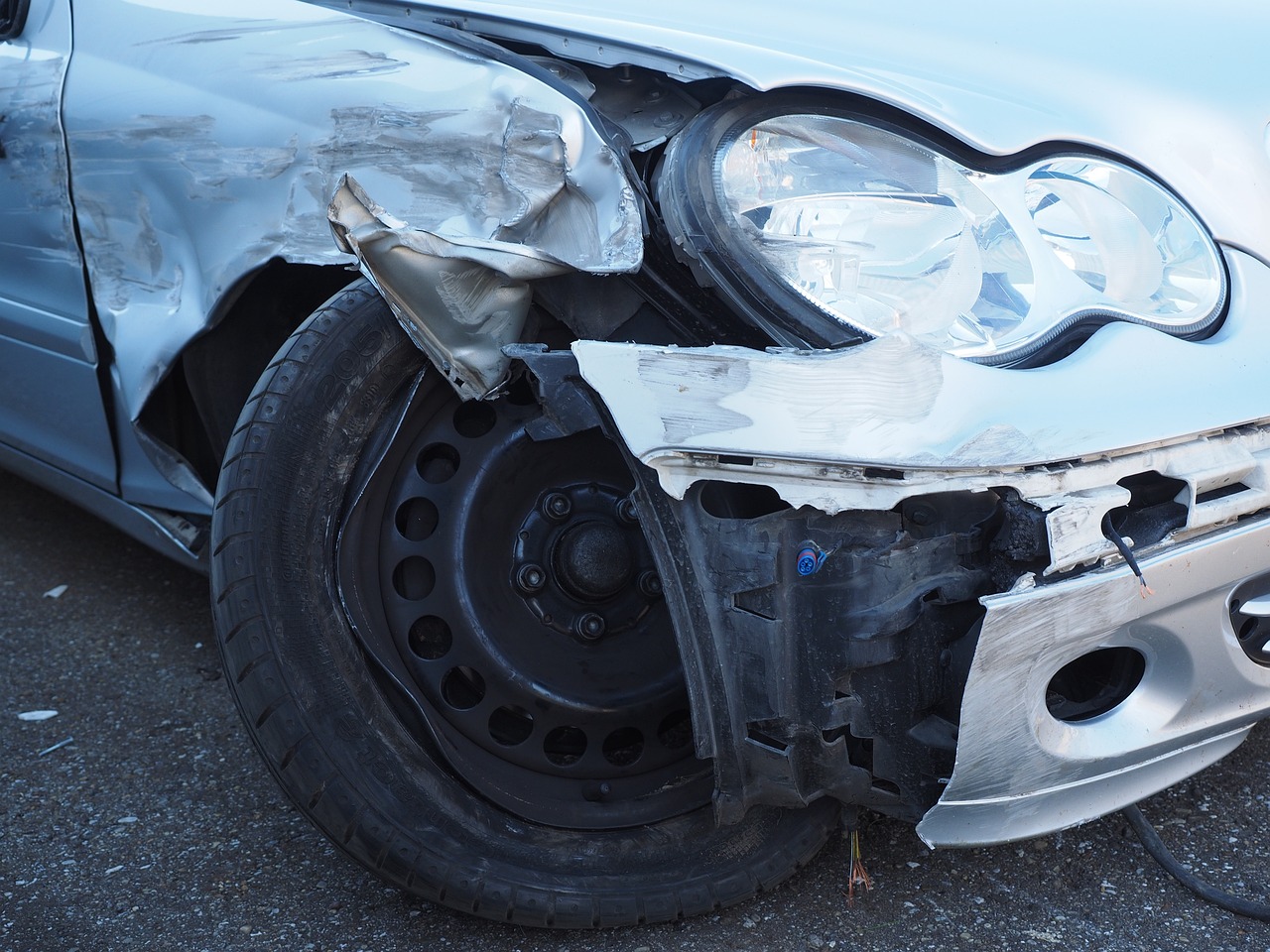Have you ever wondered about the potential consequences of neglecting tire damage? Well, in this article, we’ll explore just that. Ignoring tire damage can lead to a chain of unwanted events, from decreased fuel efficiency to increased risk of accidents. So, it’s crucial to understand the implications of ignoring such damage and take appropriate action to ensure your safety on the road. Let’s dig deeper and uncover the potential repercussions of ignoring tire damage.
Decreased traction and handling
Reduced grip on the road
When you ignore tire damage, one of the most immediate consequences is a reduced grip on the road. Damaged tires tend to have less traction, making it more difficult for your vehicle to maintain a firm grip on the pavement. This decreased grip can be particularly risky in wet or icy conditions, as the chances of your tires losing traction and causing a skid or slide increase significantly.
Difficulty in steering and controlling the vehicle
In addition to reduced grip, ignoring tire damage can also lead to difficulty in steering and controlling your vehicle. Damaged tires can affect the responsiveness of your steering wheel, making it harder to turn and maneuver your vehicle. This can compromise your ability to quickly respond to obstacles or hazards on the road, potentially leading to accidents or collisions.
Increased risk of skidding or hydroplaning
Finally, ignoring tire damage also increases the risk of skidding or hydroplaning. Tires with worn or damaged treads are more prone to losing contact with the road surface, especially when driving on wet or slippery roads. Skidding and hydroplaning occur when your tires are unable to maintain proper traction, leading to loss of control over your vehicle. These situations can be extremely dangerous and may result in accidents or damage to your vehicle.
Increased risk of blowouts
Weakened tire structure
Ignoring tire damage can weaken the overall structure of your tires. Small punctures or cuts can gradually grow into larger and more significant damage, compromising the integrity of the tire. Over time, this can weaken the tire’s structure, making it more susceptible to blowouts. A blowout occurs when the tire suddenly loses air pressure, causing it to rapidly deflate and potentially burst.
Sudden loss of air pressure
Blowouts often result in a sudden loss of air pressure within the tire. When your tire is damaged and ignored, it becomes more prone to air leakage. As the internal pressure drops, the tire may fail to properly support the weight of the vehicle, leading to a sudden loss of air pressure. This not only affects the performance and handling of the vehicle but also increases the risk of losing control and getting into an accident.
Loss of control over the vehicle
When a tire blows out, you can experience a significant loss of control over your vehicle. The sudden deflation can cause the affected tire to rapidly flatten, making it extremely difficult to steer and maneuver your vehicle safely. The loss of control can result in unpredictable movements, making it challenging to avoid obstacles or maintain your desired lane. This can be incredibly dangerous, potentially leading to accidents and harm to yourself and others on the road.
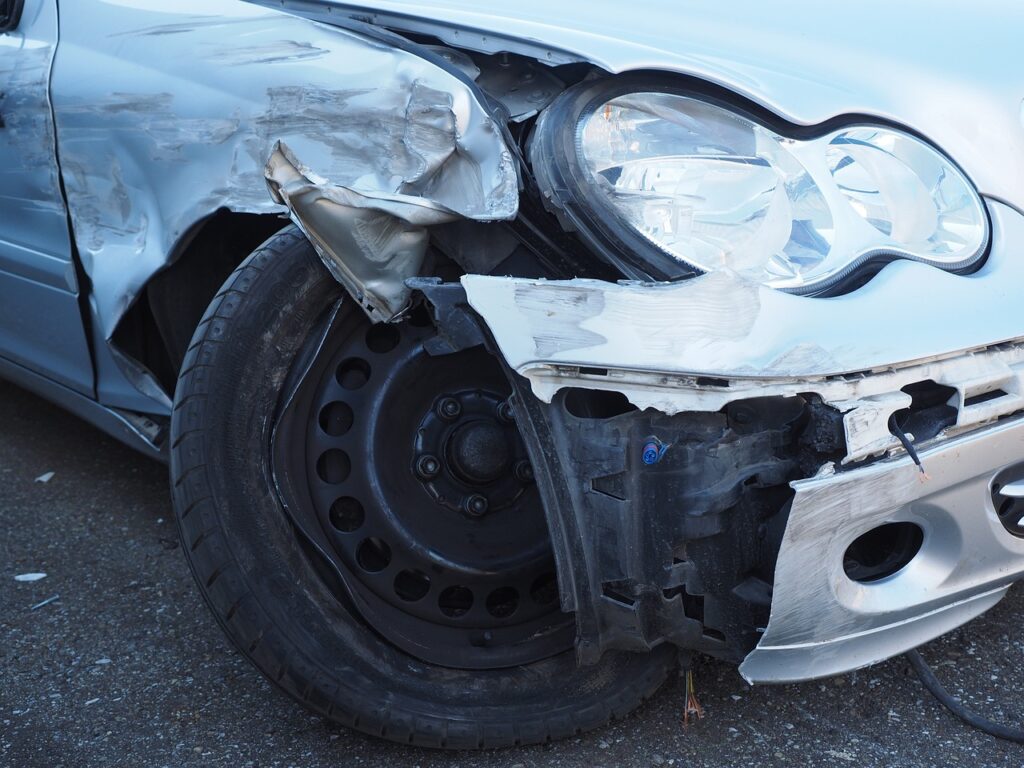
Uneven tire wear
Irregular tread patterns
Ignoring tire damage often leads to uneven wear patterns on your tires. When damage is left unaddressed, it can cause the tread to wear down at different rates across the tire’s surface. This results in irregular tread patterns, with some areas having less tread depth than others. Uneven tread wear can affect the overall performance and safety of your vehicle, as the tire’s ability to grip the road evenly is compromised.
Imbalanced weight distribution
Uneven tire wear not only affects the tread patterns but also leads to imbalanced weight distribution on your vehicle. When one tire wears out faster than the others, it can cause an imbalance in the weight distribution across the axles. This can lead to issues with the vehicle’s suspension system, affecting its stability and handling. The uneven weight distribution can also result in increased wear on other suspension components, potentially leading to costly repairs down the line.
Premature tire deterioration
Ignoring tire damage and allowing uneven wear to persist can result in premature tire deterioration. Tires that wear down unevenly tend to deteriorate at a faster rate, reducing their overall lifespan. This means you may need to replace your tires more frequently, resulting in additional expenses. Premature tire deterioration can also compromise the performance of your vehicle and increase the risk of tire failure, further jeopardizing your safety on the road.
Reduced fuel efficiency
Increased rolling resistance
Tire damage can lead to increased rolling resistance, negatively affecting your vehicle’s fuel efficiency. When a tire is damaged, it may not roll as freely as a healthy tire, requiring more energy to overcome the resistance. This increased rolling resistance can cause your engine to work harder and consume more fuel, ultimately reducing your vehicle’s fuel efficiency.
Higher energy consumption
As a result of increased rolling resistance, your vehicle will consume more energy to maintain its speed and overcome the drag caused by damaged tires. This additional energy consumption not only contributes to lower fuel efficiency but also puts a strain on your engine, potentially leading to increased wear and tear. Ultimately, ignoring tire damage can result in higher energy consumption and increased maintenance costs for your vehicle.
Lower gas mileage
Reduced fuel efficiency directly translates to lower gas mileage. When your vehicle requires more fuel to travel the same distance, you will notice a decrease in the number of miles you can drive on a full tank of gas. This can be quite costly in the long run, as you will need to spend more money on fuel to maintain your regular driving habits. Ignoring tire damage not only impacts your safety but also your wallet, as you may find yourself making frequent trips to the gas station.

Compromised braking performance
Longer braking distance
When your tires are damaged, their ability to grip the road is compromised. This compromised grip affects your vehicle’s braking performance, specifically increasing the distance it takes for your vehicle to come to a complete stop. The reduced traction between the damaged tires and the road surface can result in longer braking distances, making it more difficult to avoid collisions or stop in time to prevent accidents.
Impaired responsiveness
Ignoring tire damage can also impair your vehicle’s responsiveness when it comes to braking. Damaged tires may not provide the same level of grip and traction as healthy tires, leading to a delay in responsiveness when you apply the brakes. This delay can be crucial in emergency situations where you need to quickly bring your vehicle to a stop. Impaired responsiveness increases the risk of accidents and can have serious consequences for both you and other road users.
Risk of accidents
Ultimately, compromised braking performance due to ignored tire damage significantly increases the risk of accidents. Longer braking distances and impaired responsiveness make it more difficult to safely stop your vehicle, increasing the likelihood of rear-end collisions or other types of accidents. Safe and reliable braking is a fundamental aspect of vehicle safety, and ignoring tire damage puts yourself and others at unnecessary risk on the road.
Suspension and alignment issues
Misalignment due to damaged tires
Tire damage can have a direct impact on your vehicle’s suspension and wheel alignment. When tires are damaged and worn unevenly, it can throw the alignment of your wheels off balance. Misaligned wheels can cause your vehicle to pull to one side while driving, making it harder to keep your vehicle in a straight line. This misalignment not only affects your steering but also puts additional strain on other suspension components.
Uneven wear on suspension components
Ignoring tire damage that leads to uneven wear can also result in additional strain on various suspension components. When one tire wears down faster than the others, it can cause imbalanced weight distribution and uneven stress on your vehicle’s suspension system. This can lead to premature wear on components such as shocks, struts, and control arms, reducing the overall lifespan of your suspension system and potentially requiring costly repairs or replacements.
Imbalanced ride and handling
As a result of tire damage, misalignment, and uneven wear, your vehicle’s ride and handling can become imbalanced. Ignoring tire damage ultimately affects the overall stability and performance of your vehicle, making it less comfortable to drive and harder to control. An imbalanced ride can also contribute to driver fatigue and discomfort, which can further compromise your safety on the road. Addressing tire damage promptly is crucial to maintaining a smooth and safe driving experience.
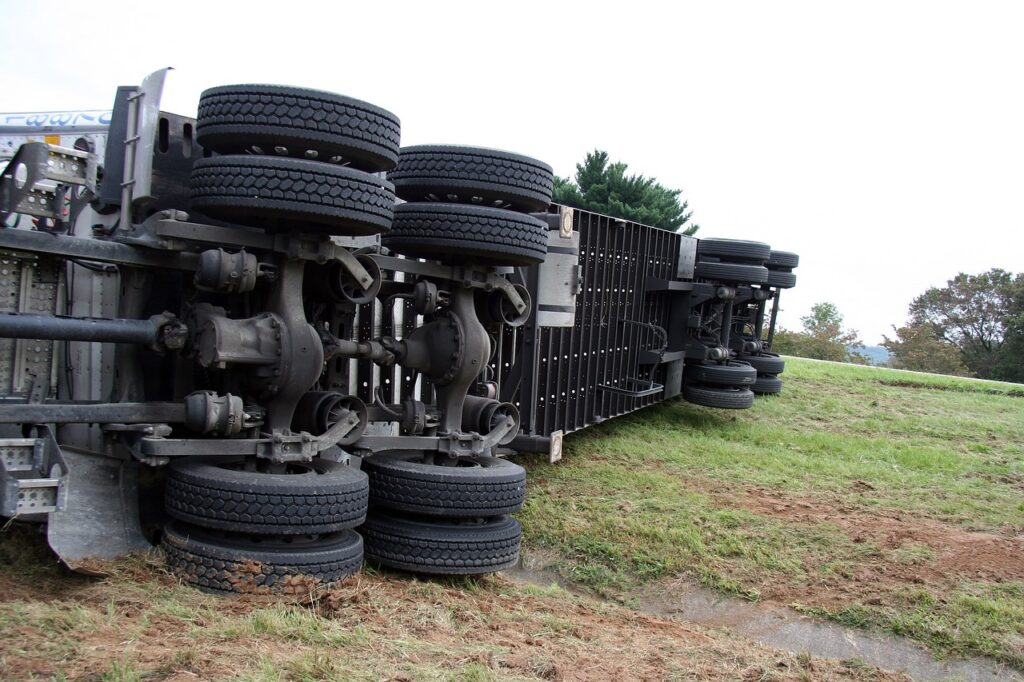
Increased road noise
Vibrations and resonance
Ignoring tire damage can lead to increased road noise inside your vehicle. Damaged tires, especially those with uneven tread wear, can produce vibrations and resonance as they make contact with the road surface. These vibrations can be felt through the steering wheel and the seat, resulting in a loud and uncomfortable driving experience. The increased road noise can also make it difficult to hold conversations or enjoy music while driving.
Tire tread noise
Tire damage can also result in increased tire tread noise. Worn or damaged tire treads produce a distinct noise as they come into contact with the road. This noise is particularly noticeable at higher speeds and can become quite bothersome during long drives. Not only does the tire tread noise disrupt the peace and quiet inside your vehicle, but it can also be an indication of underlying issues with your tires that need to be addressed.
Disrupted driving comfort
Perhaps one of the most immediate consequences of increased road noise due to ignored tire damage is disrupted driving comfort. The loud noise, vibrations, and resonance can create a stressful and unpleasant driving environment. This disruption to your driving comfort not only affects your overall experience behind the wheel but can also contribute to driver fatigue and distraction. Ignoring tire damage not only compromises your safety but can make your daily commute or road trips a less enjoyable experience.
Higher risk of tire failure
Prolonged tire damage
Ignoring tire damage prolongs the exposure of your tires to further wear and tear. Over time, the initial damage can worsen and result in more significant issues with your tires. This prolonged tire damage weakens the overall structure and performance of your tires, increasing the risk of tire failure. By neglecting to address tire damage promptly, you are exposing yourself to the potential dangers and consequences of tire failure, such as blowouts or sudden loss of control.
Increased vulnerability to road hazards
Damaged tires are more vulnerable to road hazards. Potholes, sharp objects, and debris can cause further damage to already compromised tires. When your tires are damaged, their ability to withstand and absorb the impact of road hazards is diminished. This makes it more likely for your tires to suffer punctures, cuts, or bulges, increasing the chances of a tire failure while driving. Ignoring tire damage puts you at a higher risk of encountering road hazards and experiencing the subsequent tire failures.
Costly repairs or replacements
Lastly, ignoring tire damage can result in costly repairs or replacements. As tire damage worsens, the chances of a complete tire failure or irreparable damage increase. Replacing tires can be a significant expense, especially if multiple tires need to be replaced due to neglect. Additionally, tire failure can lead to other damages to your vehicle, such as bent rims or suspension issues, which further adds to the cost of repairs. By disregarding tire damage, you are not only compromising your safety but also risking unnecessary financial burdens.
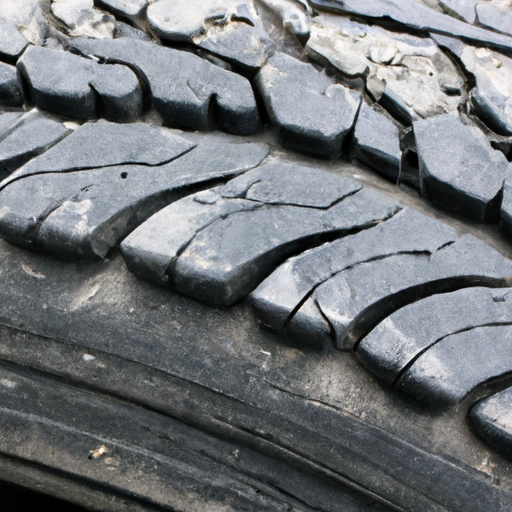
Reduced overall vehicle safety
Increased likelihood of accidents
Ignoring tire damage significantly reduces the overall safety of your vehicle. Decreased traction, compromised braking performance, and difficulty in controlling your vehicle all contribute to an increased likelihood of accidents. Your ability to safely navigate the road and respond to unexpected situations is compromised when your tires are damaged and ignored. Prioritizing the maintenance and repair of your tires is essential for maintaining the safety of your vehicle and reducing the risk of accidents.
Compromised stability and control
Tire damage affects the stability and control of your vehicle. When your tires are damaged, they can no longer provide the necessary grip and traction to keep your vehicle stable and under control. This compromises your ability to safely maneuver and handle your vehicle, increasing the risk of losing control and getting into accidents. By ignoring tire damage, you are knowingly compromising the stability and control of your vehicle, putting yourself and others in danger.
Potential harm to passengers
Neglecting tire damage can also result in potential harm to passengers in your vehicle. In the event of a tire failure or loss of control, the safety of all occupants is jeopardized. Unpredictable movements, collisions, or rollovers can occur, leading to serious injuries or worse. As a responsible driver, prioritizing the safety of your passengers should be a top priority. Taking the time to address and repair tire damage is an important step in minimizing the risks and potential harm to those riding in your vehicle.
Legal implications
Violation of traffic and safety regulations
Driving with damaged or unsafe tires may be considered a violation of traffic and safety regulations. Many jurisdictions have laws in place requiring vehicles to have properly maintained and safe tires. By ignoring tire damage, you not only put yourself and others at risk but also potentially face legal consequences if caught by law enforcement. It is essential to familiarize yourself with the tire-related regulations in your area and ensure your tires meet the required safety standards.
Potential fines or penalties
Driving with inappropriate or unsafe tires can result in fines or penalties. If law enforcement determines that your tires are damaged and pose a safety risk, you may be issued a citation and required to pay a fine. The amount of the fine can vary depending on the severity of the tire damage and the jurisdiction in which you are driving. Ignoring tire damage can not only lead to costly repairs and replacements but also financial repercussions in the form of fines or penalties.
Liability in case of accidents
Ignoring tire damage can also have legal implications in the event of an accident. If your damaged tires are determined to be a contributing factor to the accident, you may be held liable for any damages or injuries caused. Negligence in properly maintaining your tires and addressing known issues can shift the blame and legal responsibility to you. It is crucial to prioritize tire maintenance and promptly address any damage to minimize your legal liability in case of accidents.
